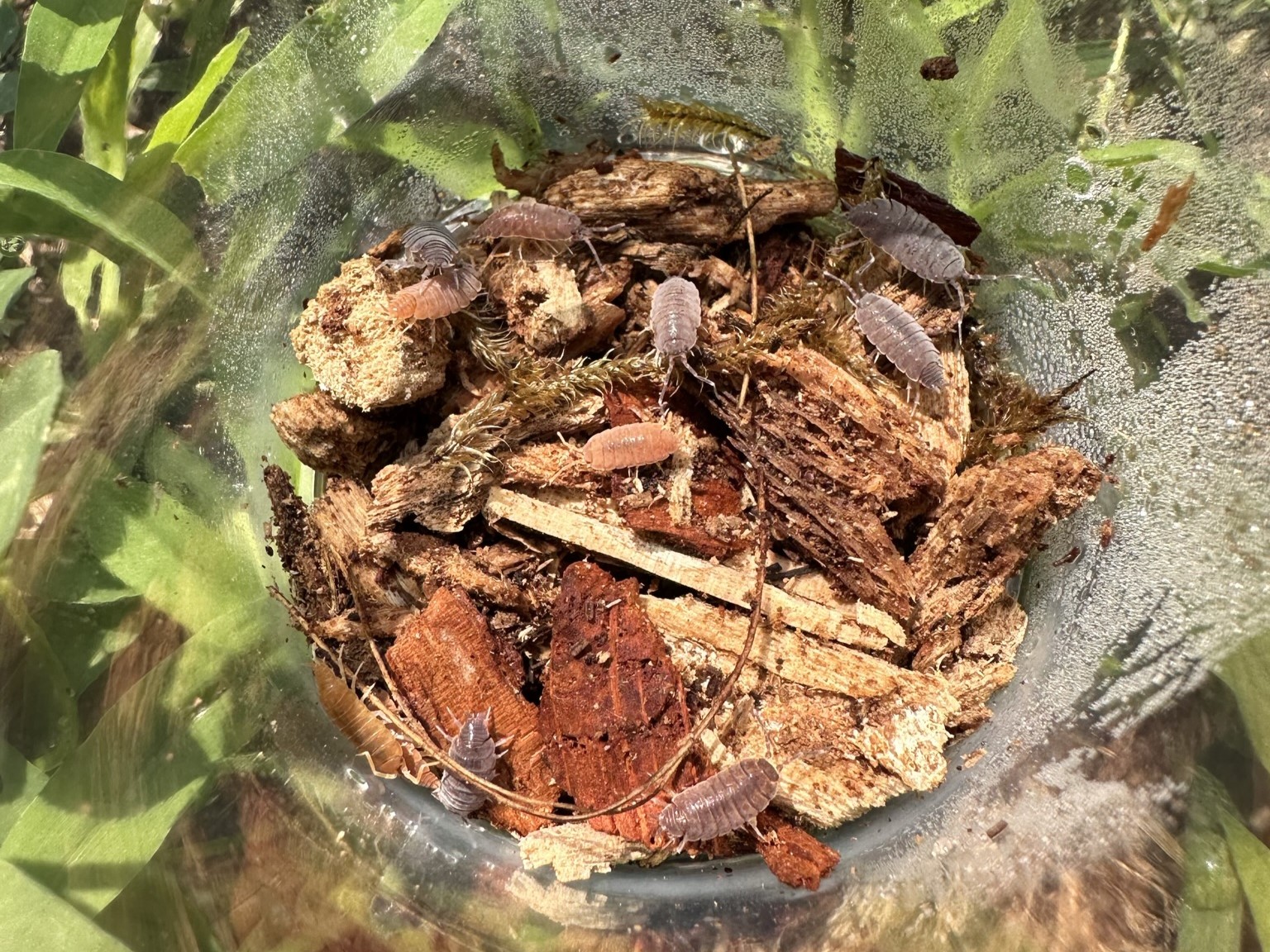Types of Isopods
There are thousands of species of isopods, but we currently work with 9 different species: Porcellionides pruinosus , Glacier ( Cubaris murina ), Platin Tung Song ( Cubaris sp ), Panda King ( Cubaris sp ), Dairy Cow ( Porcellio laevis ), Zebras ( Armadillidium maculatum ), Orange Dalmatian ( Porcellio scaber ), Lotto Mix ( Porcellio scaber ), Giant Canyon Isopods ( Porcellio dilatatus ).
This article explains how to keep your isopods happy, healthy, and reporducing in large quantities . For more information on newly purchased isopods, please read
this article.Housing Isopods:
We keep our isopods in plastic Sterilite 32 Quart Gasket Boxes. A hole saw is used to create a hole in the center of the lid over which is hot glued a piece of fine mesh. This will allow for a bit of air flow. The box is filled with 3” of properly mixed Substrate. The mix is wet beforehand, so that it is moist, but not dripping excess water. On top of the substrate, multiple layers of cork bark may be rested. This allows the isopods extra shelter. Most species seem to be more productive when kept in the mid to high 70s F, and slightly moist. You will want to keep your isopods somewhat moist. We mist all our Isopod terrariums once a week and keep the room they are held in at at least 60% humidity.
Substrate:
We like to mix our own substrate. We use a mix of worm castings, natural sand and soil, rotting wood, leaf litter, spagnam moss, and cork bark (as well as other bark). We make sure to include plenty of climbing and hiding spaces as well. Pieces of wood, rocks, and even small hides are great. Since we are in Northern Michigan, we often find bones or antlers in the woods, which the isopods LOVE.
Feeding Isopods:
Isopods will feed upon a wide variety of foods. We feed ours a half dollar size piece of Repashy Bug Burger once a week and a comparably sized slice of zucchini three days after. Occasionally, we offer high quality dog food kibble, mushroom, and dried fish food flakes. Be careful when offering grain-based foods – these can and will attract mites, which can reduce the productivity of the culture, if not cause it to crash outright. We've also had a lot of luck with Josh's Frogs Clean Up Crew Cuisine.
Adding Isopods to the Vivarium:
Isopods will spend the majority of their time burrowed in the substrate of their culture, making it difficult to add them to a vivarium. Fortunately, they have a habit of seeking shelter under the cork bark pieces provided in the culture. Simply pick up the cork bark and shake it over a container, expelling any resident isopods. These can then be added to the vivarium, or used to start an additional isopod culture. Isopods will benefit from targeted feeding in the vivarium. A bit of Josh’s Frogs Clean Up Crew Cuisine, fed every couple of weeks, will help ensure a steady population of isopods are present in the vivarium.
Conculsion:
Isopods, although not necessary to successfully keeping dart frogs or other amphibians and reptiles, certainly make proper husbandry easier. They play an important function in the home vivaria – mainly as nutrient cyclers and an additional food source, and also function as an excellent secondary source of calcium. They are simple to keep and to culture at home.

